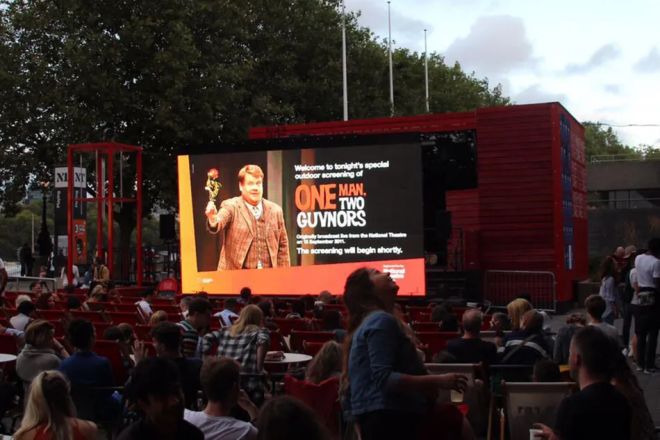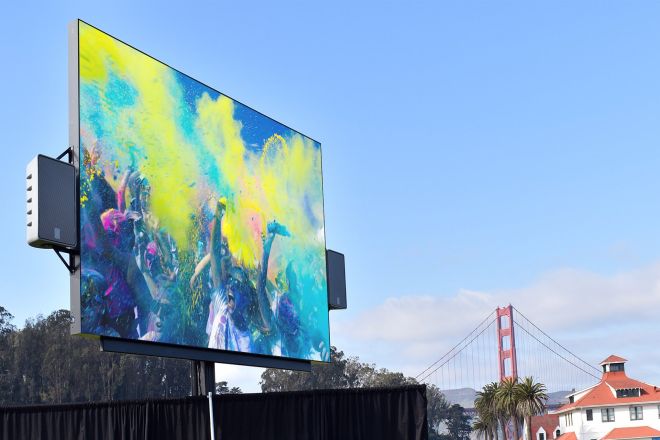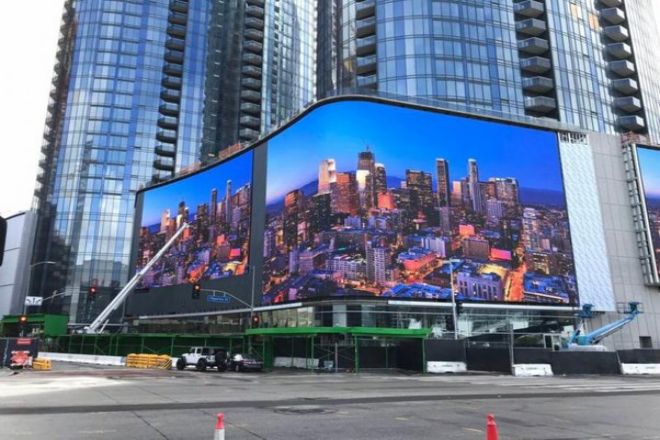Introducción

As an important carrier of modern information dissemination, pantallas de visualización LED have penetrated into every corner of urban life in terms of popularity and application. However, as the number of LED displays continues to increase, how to better utilize this medium for effective information dissemination has become an important issue before us.
In this process, audience classification is particularly important. Different audience groups have different information needs and reception habits. Only by deeply understanding and accurately targeting the audience can we develop a content planning plan that better meets their needs, thereby achieving effective dissemination of information.
Therefore, this article aims to conduct an in-depth analysis of the classification of LED display audiences and their impact.
1. Why Audience Segmentation?

Audience classification is crucial in the application of LED display screens. The detailed and professional reasons are as follows:
Primero, audience classification helps achieve accurate dissemination of information. As an important medium for information dissemination, the LED display screen’s dissemination effect depends to a large extent on the accuracy and pertinence of the information. Different audience groups have different information needs and points of interest.
By classifying audiences, we can more accurately grasp the information needs of different groups and provide them with tailor-made content. This will not only improve the efficiency of information dissemination but also enhance the attractiveness and influence of the information, making the information more deeply rooted in people’s hearts.
En segundo lugar, audience classification helps improve brand image and marketing effectiveness. In the application of LED display screens, brand image and marketing effects are key considerations. By classifying audiences, we can develop targeted brand image display and marketing strategies based on the characteristics and needs of different audiences.
For example, for young audiences, we can use more fashionable and avant-garde design styles and content forms to attract their attention, while for middle-aged and elderly audiences, we can use more stable and traditional styles to fit their needs. Aesthetic and cognitive needs. Such a classification strategy can better meet the needs of different audience groups, thereby improving brand image and marketing effectiveness.
Además, audience classification also helps optimize the resource allocation of LED displays. The resource configuration of LED display screens includes content planning, playback time, playback frequency, and other aspects. By classifying the audience, we can reasonably arrange the playback time and frequency of the LED display according to the active time and viewing habits of different audiences to maximize the utilization and effect of the display.
At the same time, in response to the content needs of different audience groups, we can also optimize content planning to make the content more in line with the audience’s tastes and interests, thereby improving audience satisfaction and stickiness.
Finalmente, audience classification is an important foundation for continued innovation and development in LED display applications. With the rapid development of society and the continuous advancement of technology, the needs and habits of the audience are also constantly changing.
By classifying the audience, we can capture these changes in time, thereby adjusting and optimizing the application strategy and content form of the LED display. This not only enables the LED display screen to keep pace with the times but also provides strong support for the continued innovation and development of the industry.
2. What factors determine the audience classification of LED display screens?
There are various factors that determine the audience classification of LED display screens. These factors jointly affect the audience’s information-receiving habits, needs, and points of interest, thus determining how to carry out accurate classification. The following are the main factors that determine the audience classification of LED displays:
1). Geographical location and environment
Regional characteristics: Audiences in different geographical areas may have different cultural backgrounds, consumption habits, and interests. For example, there may be significant differences in lifestyle and information needs between audiences in urban and rural areas, as well as between coastal and inland areas.
Type of place: The place where the audience is located, such as commercial centers, transportation hubs, schools, hospitals, etc., also determines their demand for and attention to information.
2). Demographic characteristics
Age: Audiences of different age groups have different psychological, physiological, and social roles, so their needs for and reception of information are also different.
Gender: Men and women tend to have different interests, consumption habits, and psychological needs, which affects their preferences for LED display content.
Education level: The level of education determines the audience’s information processing ability and interest range, thus affecting their understanding and acceptance of the content of the LED display.
Occupation and income: Occupation and income level determine the lifestyle and spending power of the audience, which in turn affects their focus and needs for information.
3). Psychological and behavioral characteristics
Interests and hobbies: The interests and hobbies of the audience determine their preferences and choices for information, such as sports, travel, culture, etc.
Information needs: Audiences have different needs for information, such as instant news, entertainment information, life services, etc., which determine their attention to the content of LED displays.
Receiving habits: The audience’s information-receiving habits, such as active search or passive acceptance, as well as viewing time and frequency, also affect the dissemination effect of LED display content.
4). Media usage habits
Media preference: The audience’s preference for different media forms, such as text, pictures, videos, etc., determines the presentation form of LED display content.
Interactive needs: The audience’s demand for interactivity, such as participation in voting, interactive games, etc., also affects the design and communication strategy of LED display content.
5). Social and cultural factors
Cultural background: Audiences with different cultural backgrounds have differences in values, aesthetics, and ways of thinking, which affects their understanding and acceptance of LED display content.
Social trends: Social hot spots, fashion trends, and current affairs will also affect the audience’s information needs and points of interest, thereby affecting the planning and dissemination of LED display content.
3. How can LED displays target specific audiences?
When we talk about how LED displays can target specific audiences, we are actually talking about how to customize and play the content on LED displays according to the specific needs, interests, and behavioral habits of a certain type of person. Doing so can make the content more engaging and more relevant to these people’s needs.
Primero, we need to understand who this audience is. For example, they may be young, middle-aged, or people in a specific profession, such as doctors or teachers. We need to know what they like and care about, as well as where and when they usually see LED displays.
Próximo, we need to create content based on this information. If our audience is young people, the content may be more fashionable and interesting, using popular elements and vocabulary; if it is middle-aged people, the content may be more steady and practical, focusing on the transmission and explanation of information.
We then consider how we can use technology to better display this content. For example, we can use high-definition LED displays to display clearer images and videos or use dynamic effects and interactive functions to attract the audience’s attention.
In addition to this, we also need to consider how to interact with the audience. For example, we can set up some interactive links on the display screen to allow the audience to participate, such as voting, answering questions, etc. This not only increases audience engagement but also allows us to better understand audience needs and feedback.
Finalmente, we have to consider the time and place of playback. For example, if our audience often sees LED displays in a shopping mall or subway station, then we need to increase the frequency of playback and content updates in this place.
4. What are the benefits of LED displays for specific audiences?

LED displays have many benefits for specific audiences, which are mainly reflected in the following aspects:
- Improve information transmission effect
When an LED display screen customizes content for a specific audience, it can deliver information more accurately. Because content is designed based on your audience’s needs, interests, and habits, it’s more likely to catch their attention and resonate with them. In this way, the effectiveness of the message will be greatly improved, and the audience will be more likely to accept and remember the content presented.
- Enhance brand awareness and image.
Displaying customized content to specific audiences through LED displays can effectively enhance brand awareness and image. Audiences will develop a favorable impression of the brand because they see content relevant to them, thereby increasing their recognition and loyalty to the brand. This customized marketing strategy helps brands stand out in the fierce market competition.
- Increase audience engagement
LED display content targeted at specific audiences tends to be more interactive and participatory. For example, you can set up interactive sessions, conduct question-and-answer games, etc., to allow the audience to actively participate in the content.
This sense of participation can not only increase the stickiness of the audience but also allow them to understand and experience the brand more deeply, thus deepening their impression and favor of the brand.
- Accurate market positioning
Through LED display strategies targeting specific audiences, companies can position the market more accurately. After understanding the needs and preferences of the audience, companies can develop products and services in a more targeted manner to meet the real needs of the market.
This precise positioning helps companies avoid resource waste and market risks and improve marketing effectiveness and return on investment.
- Promote sales growth
LED display content targeted at specific audiences is often more targeted and persuasive. By displaying product or service information that is closely related to the audience’s needs, you can stimulate the audience’s desire to buy and promote sales growth.
At the same time, this customized marketing strategy also helps to establish a good reputation and customer relationships, laying a solid foundation for the long-term development of the company.
5. What role does geographical location play in audience positioning for LED displays?
Geographical location plays a crucial role in audience positioning for LED displays. The following are some of the effects of geographical location on LED display audience positioning:
- Determine your target audience
Geography is one of the key factors in determining your target audience. Different regions may have different compositions of residents, including differences in age, gender, occupation, income, and other aspects.
Therefore, based on the specific location of the LED display, we can initially determine the characteristics of the audience it may cover and then formulate a more precise content strategy.
- Understand audience needs and interests.
Geography is closely related to the needs and interests of your audience. For example, in a business district, the audience may pay more attention to information about shopping, dining, and entertainment; around a school, students and parents may be more interested in education, training, and other related content.
Therefore, by understanding the cultural, economic, and social background of the area where the LED display is located, the needs and interests of the audience can be more accurately grasped.
- Optimize playback time and content.
The geographical location also affects the playback time and content arrangement of the LED display. For example, during periods of heavy traffic, such as rush hours or holidays, the frequency of playback and content updates can be appropriately increased to attract the attention of more audiences.
At the same time, according to regional characteristics, the broadcast content can be flexibly adjusted to make it closer to the actual needs of local audiences.
- Improve advertising effectiveness
For companies that rely on LED displays for advertising, the importance of geographical location is self-evident. By accurately targeting the audience groups of LED displays, companies can place advertisements in areas where the target audience is most concentrated, thereby increasing the exposure rate and conversion rate of advertisements.
In addition, combined with geographical location data, companies can also monitor and optimize advertising effects in real-time to achieve more efficient marketing investments.
6. As an advertiser, how do we measure the effectiveness of LED display audience positioning?

As an advertiser, it is crucial to measure the effectiveness of LED display audience positioning, which helps ensure the accuracy of advertising and maximize returns. The following are some key indicators and methods for measuring the effectiveness of LED display audience positioning:
- Audience coverage and accuracy
First, it is necessary to evaluate whether the audience covered by the LED display matches the advertising target group. This can be achieved by analyzing the geographical location of the display, audience characteristics (such as age, gender, occupation, etc.), and audience behavior patterns.
Audience targeting is effective if the audience covered by the display strongly overlaps with the target group of the ad.
- Ad impressions and click-through rates
Advertising exposure is a direct indicator of the audience positioning effect of LED displays. By monitoring the number of plays and audience views of your ads, you can evaluate your ad’s coverage and audience attention.
At the same time, the click-through rate is also an important indicator, which reflects the audience’s interest and willingness to interact with the advertising content. A high click-through rate usually means that the audience targeting is more accurate.
- Conversion rate and sales
Conversion rate is a key metric for measuring advertising effectiveness. It represents the proportion of viewers who take further action (such as purchasing a product, visiting a website, etc.) after viewing an ad. By tracking conversion rates, advertisers can understand the actual impact of their ads on their audiences.
In addition, sales are also an important indicator for measuring advertising effectiveness. If sales increase after the advertisement is launched, then the audience positioning can be considered effective.
- Audience feedback and surveys
Understanding audience feedback on LED display advertising is an important way to evaluate the effectiveness of audience positioning. Audience opinions and suggestions on advertising content, form, broadcast time, etc., can be collected through questionnaires, online comments, etc.
This feedback can help advertisers understand the needs and expectations of their audiences and further optimize their audience positioning strategies.
- Data analysis and comparison
Finally, advertisers can use data analysis tools to quantitatively evaluate the effectiveness of LED display audience positioning.
By comparing the advertising performance data of different time periods, different locations, or different audience groups, you can find out the advantages and disadvantages of the audience positioning strategy and then make adjustments and optimizations.
Conclusión
Through in-depth research on different audience groups, you can more accurately grasp their needs and characteristics and then develop a more accurate and effective content planning strategy.
If you still have questions about LED displays, Por favor póngase en contacto con nosotros.
